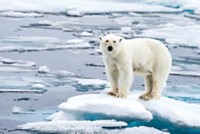Advertisement
Grab your lab coat. Let's get started
Welcome!
Welcome!
Create an account below to get 6 C&EN articles per month, receive newsletters and more - all free.
It seems this is your first time logging in online. Please enter the following information to continue.
As an ACS member you automatically get access to this site. All we need is few more details to create your reading experience.
Not you? Sign in with a different account.
Not you? Sign in with a different account.
ERROR 1
ERROR 1
ERROR 2
ERROR 2
ERROR 2
ERROR 2
ERROR 2
Password and Confirm password must match.
If you have an ACS member number, please enter it here so we can link this account to your membership. (optional)
ERROR 2
ACS values your privacy. By submitting your information, you are gaining access to C&EN and subscribing to our weekly newsletter. We use the information you provide to make your reading experience better, and we will never sell your data to third party members.
Environment
Researchers Follow Pesticides’ Migration To The Arctic
Persistent Pollutants: Four-month cruise finds traces of endosulfan and five other widely used pesticides
by Naomi Lubick
December 1, 2011

Six pesticides used in high volumes for agriculture travel from farm fields to the Arctic, researchers report in Environmental Science & Technology (DOI: 10.1021/es202655k).

Every year, farmers in countries including India, China, Russia, the U.S., and some developing countries protect their crops using tens of thousands of tons of pesticides such as endosulfan. Researchers know that these compounds can travel long distances by air and water and reach the Arctic.
On a four-month research cruise from the East China Sea northward to the Chukchi Sea in the High Arctic, researchers led by Zhiyong Xie of the Helmholtz Center in Geesthacht, Germany, measured levels in air and water of the pesticides chlorothalonil, chlorpyrifos, dacthal, dicofol, endosulfan, and trifluralin. The team developed new air sampling methods to detect some of these pesticides.
The Arctic Monitoring and Assessment Program, a transnational scientific working group that monitors pollutants, previously had tracked the insecticide endosulfan and the herbicide trifluralin. While some Arctic data previously existed on chlorothalonil, chlorpyrifos, dacthal, and dicofol, the team collected the first measurements of the compounds in air and water levels along an ocean path from East Asia to the Arctic. This information should help researchers understand if the pollutants travel more readily by air or by sea, as well as how they degrade along the way.
The study suggests that these pesticides could cause environmental problems far from farms, says Xie. While the compounds degrade as they travel to the Arctic, he points out that once they are in the Arctic’s cold temperatures, the pesticides could become more stable and last longer. He thinks researchers next need to focus on the pollutants’ effects in Arctic ecosystems.





Join the conversation
Contact the reporter
Submit a Letter to the Editor for publication
Engage with us on Twitter